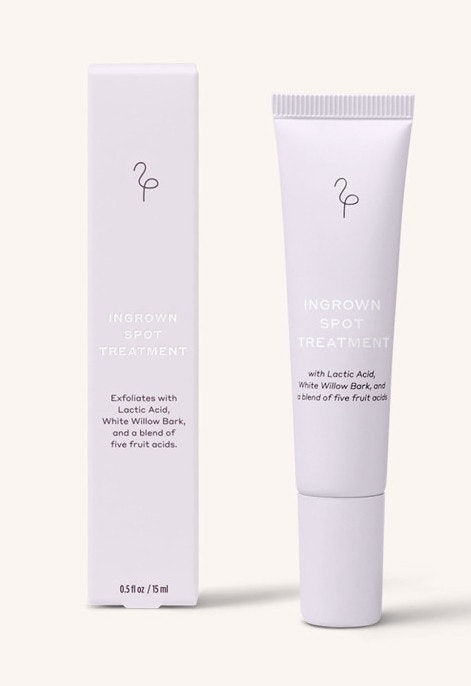

Thankfully, there are creams available that can assist in treating and preventing further ingrown hair.īefore purchasing any cream for ingrown hair, there are a few factors to consider. Ingrown hair can be painful, itchy, and leave scars if not treated properly. Many people battle with unsightly ingrown hair, especially after shaving or waxing.
#FLAMINGO RAZOR BUMP TREATMENT SKIN#
Just be sure to not exfoliate right after you remove an ingrown-allow your skin to rest and heal.If you’re looking for a solution to ingrown hair, you’re not alone. Rabach’s favorite is SkinMedica AHA/BHA Exfoliating Cleanser, which also lightens dark spots left over from ingrown hairs or acne. tretinoin or adapalene with CeraVe or Neutrogena Hydro Boost Water Gel.” And while you’re in the shower, make sure that you’re not only exfoliating your face, but your body as well. Apply an antibiotic or hydrocortisone cream afterward to reduce inflammation.įor the face, she suggests incorporating a retinol cream to remove dead skin and debris that can clog hair follicles for the bikini area, she’s a fan of clindamycin lotion because “it’s watery, spreads easily, and doesn’t leave residue. Rabach recommends using hot water to soften the hairs prior to shaving, using shaving cream, and always working with a sharp blade.

For areas prone to developing ingrowns, Dr. Rather than constantly battle ingrowns, it’s best to adopt a few best practices for your hair-removal routine. However, if you’re unable to tweeze the hair yourself, or the bump and subsequent pain take more than a week to resolve, you can visit your doctor or dermatologist’s office to have them excise the area and remove the hair. Then shave the area in one direction with a fresh, sharp razor. Rabach recommends applying a warm compress, like a clean washcloth, to the area to help open up your pores and then gently tweezing the hair out.

Luckily, you can take care of an ingrown at home if you act quickly enough. So they come to the area, causing inflammation and pain.” Rabach, “White blood cells, our immune fighters, recognize that the hair is not supposed to be under the skin completely. While it may be tempting to just let skin irritation be, most ingrowns will need to be removed manually, lest they become more infected. If they develop in clusters, it can become a condition known as pseudo folliculitis, aka razor bumps. Curly hair is the primary risk factor here. For women, they present most frequently along the bikini line, while men often experience ingrowns in their beards. Morgan Rabach explains that an ingrown hair is when “your hair gets trapped beneath the surface of the skin instead of growing through the skin.” This in turn can cause that telltale irritation and pain (and sometimes pus, depending on the severity of the case) as your immune system attempts to rid your body of the hair. Everything from your legs to a beard can develop them, but in the summer especially, when you want to wear as little clothing as possible (because humidity), they can become quite the nuisance.īut first, what exactly is an ingrown? Board-certified dermatologist and co-founder of LM Medical Dr. However much you choose to groom your nether regions via waxing, shaving, or the occasional trim, we’re all susceptible to the errant ingrown, men included. You glance down and a red, irritated bump is staring back at you. We’re all familiar with this moment-you throw on your cute new swimsuit, ready to hit the beach, and as you’re shimmying off your cover-up, you feel a little pain in your bikini region.


 0 kommentar(er)
0 kommentar(er)
